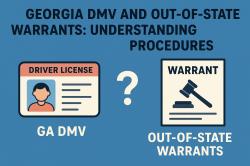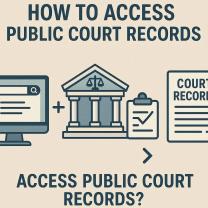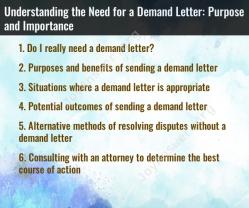How to create a simple will?
Creating a simple will involves several steps to ensure that your wishes regarding the distribution of your assets are clearly outlined and legally recognized. Here is a step-by-step guide to help you create a simple will:
Step 1: Research and Gather Information
Understand State Laws:
- Research and understand the laws regarding wills in your state or country. Laws can vary, and it's important to comply with the legal requirements specific to your jurisdiction.
List Your Assets and Debts:
- Make a comprehensive list of your assets (property, bank accounts, investments, personal belongings) and debts. This will help you determine what you want to include in your will.
Step 2: Choose an Executor
- Select an Executor:
- Choose a trusted person to be the executor of your will. This person will be responsible for carrying out the instructions in your will, including distributing your assets and settling your debts.
Step 3: Decide on Beneficiaries
- Identify Beneficiaries:
- Decide who you want to inherit your assets. Be specific about what each beneficiary will receive.
Step 4: Consider Guardianship for Minors
- Appoint a Guardian (if needed):
- If you have minor children, consider appointing a guardian to take care of them in the event of your death. Discuss this responsibility with the chosen guardian.
Step 5: Draft the Will
Choose a Method:
- Select a method for drafting your will. Options include using online templates, legal software programs, or consulting with an attorney.
Include Necessary Elements:
- A basic will typically includes the following elements:
- Introduction
- Executor appointment
- Beneficiary designations
- Guardianship designations (if applicable)
- Instructions for debts and taxes
- Signatures and witnesses
- A basic will typically includes the following elements:
Step 6: Review and Revise
- Review Periodically:
- Periodically review your will, especially after major life events. Update it as needed to reflect changes in your circumstances.
Step 7: Sign and Store the Will
Sign the Will:
- Sign the will in the presence of witnesses. The number of required witnesses can vary by jurisdiction.
Witness Signatures:
- Have at least two witnesses sign the will. Witnesses are typically individuals who are not beneficiaries and have no conflicts of interest.
Notarization (if needed):
- Some jurisdictions may require notarization. Check your local laws to determine if notarization is necessary.
Store the Original:
- Store the original signed and witnessed will in a safe and accessible location. Inform your executor and close family members about its location.
Step 8: Consider Legal Advice
- Consult with an Attorney:
- While a simple will can often be created without legal assistance, consulting with an attorney may be beneficial, especially if your situation is complex.
Step 9: Inform Relevant Parties
- Inform Executor and Family:
- Ensure that your executor and relevant family members are aware of the existence and location of your will.
Creating a simple will is an important step in estate planning, but it's advisable to seek legal advice if you have specific concerns or if your situation is more complex. An attorney can provide guidance based on your jurisdiction's laws and help ensure that your will accurately reflects your intentions.
How can one draft a basic will?
Drafting a basic will can be straightforward, but it's crucial to follow certain steps to ensure its legal validity and effectiveness. Here's a guide to help you get started:
Gather Information:
- List your assets and liabilities: Make a comprehensive list of all your possessions, including bank accounts, real estate, vehicles, investments, retirement plans, and outstanding debts.
- Identify potential beneficiaries: Decide who will inherit your assets, including family members, friends, charities, or organizations.
- Research state laws: Each state has specific requirements for valid wills. Familiarize yourself with your state's laws regarding witnesses, signing procedures, and required information. You can find this information on your state's government website or legal resources websites.
Choose a Format:
- Handwritten will: This is the simplest option but may not be legally recognized in all states. Ensure you follow your state's specific requirements for handwritten wills, including proper wording and witness signatures.
- Online will services: Several online platforms offer guided will creation tools for a fee. These services can be helpful and user-friendly, but ensure you choose a reputable platform and understand any limitations of their template forms.
- Lawyer-assisted will: Consulting with a lawyer is the most secure and reliable option, especially if your situation involves complex assets, family dynamics, or specific wishes.
Draft and Finalize your Will:
- Use a clear and concise format: While specific formats may vary by state, your will should generally include the following sections:
- Introduction: State your name, date of birth, and residence.
- Debt clause: Specify how your debts will be paid.
- Beneficiary clauses: Clearly state who will inherit your assets and the specific portion they will receive. You can include specific items or percentages of your estate.
- Guardianship clause (if applicable): If you have minor children, designate a guardian to care for them.
- Executor clause: Appoint an executor responsible for managing your estate and carrying out the terms of your will.
- Signature clause: Sign and date your will in the presence of witnesses.
- Witness signatures: Ensure your will is signed by two witnesses who are not beneficiaries and are competent adults. They should also sign and date the document in your presence.
- Notarization: While not mandatory in all states, notarizing your will adds an extra layer of security and can simplify the probate process.
Store your will securely:
- Keep the original will in a safe and accessible location, such as a safe deposit box, fireproof file cabinet, or secure online storage service.
- Inform your executor and beneficiaries about the location of your will.
Review and update your will:
- Regularly review your will and update it as your life circumstances change, such as marriage, birth, death of beneficiaries, or changes in your assets.
Additional resources:
- FreeWill: https://www.freewill.com/
- Nolo: https://www.nolo.com/legal-encyclopedia/wills-trusts-estates
- American Bar Association: https://www.americanbar.org/
Disclaimer: This information is for general guidance only and does not constitute legal advice. It is recommended to consult with an attorney for personalized legal advice and assistance in drafting your will.













